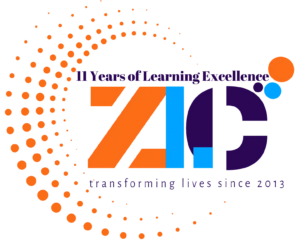Everyone wants results. Results that are visible, quantifiable. Especially if a lot of time, effort, and money have been spent on a particular endeavour – like a training course. When it comes to corporate training, employers want to see a measurable improvement in the quality of employee performance. It is always a good idea to align business or organizational goals to employee training to get the best out of it. Because at the end of the day – the main priority for a business is not just to have a highly productive workforce but to have that productivity translated into higher profits for your organization.
Just as periodical evaluation of employees is needed to judge the competency level of your workforce it is also important to assess the impact of your training course, to know whether you are getting the worth of your investment or not. It’s not enough to hire a well-known L&D consultant of India and leave it all to chance.
How to assess the effectiveness of your training?
There are several ways of measuring the impact of your training courses. Employee training metrics may involve qualitative data that includes peer and learner feedback on how effective the training had been and whether it had made any difference to their performance in a positive way, or through quantitative tools like quiz scores and completion rates. However, to see better results, it is always advisable to ensure that the top L&D consultants you hired had properly understood the organizational goals and came up with a customized training program to fit those goals – for example, if you are wishing for a higher amount of sales a given year a specializes sales training course should be organized for your sales professionals.
Employers can also utilize the very popular Kirkpatrick Model to evaluate the efficiency of the training programs. Developed by Dr. Donald Kirkpatrick – past president of the American Society for Training & Development in the 1950s. This model has four steps as follows:
Reaction
At this stage, the management tries to evaluate how the learners feel about the trainee program they have undertaken. At this stage, it is important to know, whether your employees have noticed any marked difference in their performance post-training, or whether they have enjoyed the training process. These questions can be asked through face-to-face interviews, online polls, or printed survey forms.
Learning
Here lies the result of all the months, and money spent on hiring the top L&D consultants of India, training your workforce. How much have the participants learned?
Did they learn what they were supposed to learn? The management can use tools such as written exams, online tests, quizzes, etc. Employers can also keep a track of how much progress the participants made, and how many levels or courses have been completed. Some of the top L&D consultants of India provide in-house LMS (Learning Management Software) which can help both trainers and employers keep a real-time record of how much progress has been done.
Behaviour
Mere learning is futile if there is no effective application of it. This is the stage of observing results – in the real world, real-time. It is important to know if there is any quantifiable improvement in the performance of the workforce. This can be done in different ways:
- Interviewing peers or managers about the employee’s performance. Have they managed to meet deadlines in a quicker, efficient way?
- Analysing customer surveys, comments –etc., are they noticeably more satisfied with the quality of products and services? If you are getting a more positive response than before then that means the training course had done its job of making your employees more profitable.
Results
Now it’s time to evaluate how successfully the training program has met your organizational goals. Have the profits of the business increased? Is there any major reduction in the employee attrition rate, i.e. – have the organization managed to retain a greater amount of employees than the previous years?
The Kirkpatrick Model is a traditional way of evaluating training programs. Many employers instead opt for a new or more unconventional way of evaluating training programs. There is no ‘one-size-fits-all approach to training program evaluation. However, when it comes to hiring a top L&D consultant of India, employers need to be aware of three questions – why train, whom to train, and what to train on?
Not all employees need training. Only those who are falling behind meeting organizational goals or meeting performance metrics need to be trained. Moreover, the HR leaders should determine which specific areas they need improvement on – for example, an employee can possess fantastic technical/domain knowledge but poor to mediocre presentation skills. Then training needs to be provided on improving presentation skills of said employee.
The organization can conduct virtual assessments to gain knowledge of the current proficiency an employee has on a particular subject/aspect of their role, or whether their present skills match their job role. Such assessments can analyse the cognitive ability, domain knowledge of the employee. Based on the results, the enterprise can arrange for customized training.
